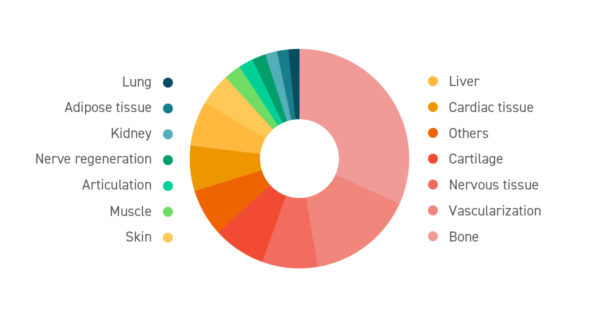
Allevi Blog
3D Bioprinting Technology: Emerging Trends and Implications
- Updated on February 9, 2023
Since the early 2000s, when studies on 3D bioprinting technology were first published, there has been great interest in adopting this innovative biofabrication strategy for a wide range of biological applications. The ability of 3D bioprinting technology to precisely position, layer-by-layer, biomaterials, living cells, growth factors, drugs, and other bioactive components has brought a host of advantages for the construction of 3D functional tissues like never seen before.
Fast forward to today, bioprinting occupies a relevant role in novel approaches to regenerative medicine, drug development, personalized medicine, and systems biology through 3D tissue modeling, transforming current outlooks to biomedical research and presents great implications for the future of modern medicine.
Trends in 3D bioprinting techniques
We can generally categorize bioprinting techniques into 4 main groups: (a) Stereolithography, (b) Inkjet, (c) Laser-assisted, and (d) Extrusion. While each 3D printing method has its merits and benefits, extrusion bioprinting has made the greatest impact and continues to have a significant role in shaping 3D bioprinting technology.
Extrusion-based bioprinting, in which mechanical or pneumatic forces deposit bioink through a nozzle layer-by-layer, has become the most widely studied technique in recent years. Compared to other bioprinting methods, extrusion-based bioprinting technology has several advantages, such as cost-effectiveness, relatively fast print speed, compatibility with a wide range of biomaterials, and is the most accessible and easy-to-use technique for beginners.
Trends in 3D bioprinting applications
As we consider both short and long-term applications of bioprinting: from basic cell biology research to 3D tissue/disease models for preclinical drug testing and regenerative medicine, we present 3 main topics of interest pertaining to 3D bioprinting technology research.
Application-driven research
Approximately 40% of all publications related to 3D bioprinting technology refer to the application in a specific organ or tissue. Of which bone, vascularized tissue, nerve tissue, and articular cartilage make up >50% of reported publications. Since 2011, 3D bioprinted tissues have been used as pathology models for in vitro studies of diseases (e.g., cancer models), applied mainly for high-throughput screening and new drug discovery.

Biomaterials and cells research
New formulations of bioink have been one of the most exciting research topics within 3D bioprinting technology. Research in biomaterials, which accounts for about 25% of all 3D bioprinting technology publications, has focused primarily on studying polymers to obtain bioinks with mechanical, chemical, and biological characteristics suitable for each application.
Another key component of bioink is cells. Studies focused on cell types applied to 3D bioprinting represent around 15% of all publications with a significant focus on studying the viability, differentiation, and maturation of different types of stem cells (e.g., mesenchymal stem cells, induced pluripotent stem cells, adipose-derived stem cells). Spheroids and, more recently, organoids have also been used in bioprinting and have gained attention in the last few years, presenting exciting developments for translational medicine and 3D disease modeling.
Process-driven research
The development of new 3D bioprinting technologies and platforms seeks to design systems with better resolution, better cost-effectiveness, higher printing speed, and less damage to cells. In addition, these new strategies are developed to allow the creation of more complex structures that are can better recapitulate in vivo human biology.
For a deeper dive, visit link here.
As we decrease our dependence on animal studies, we observe a growing interest in adopting 3D bioprinting technology into biomedical research protocols. 3D tissue and cell cultures and organs-on-chips offer innovative solutions to accelerate advances in human-based in vitro models by enabling the recreation of physiologically relevant 3D constructs composed of human cells and tissue-based materials that recapitulate human organ, tissue, and disease structure and function. To explore how you can add 3D bioprinting to your research pipeline, speak to our Sales and Customer Success team for more information today!

